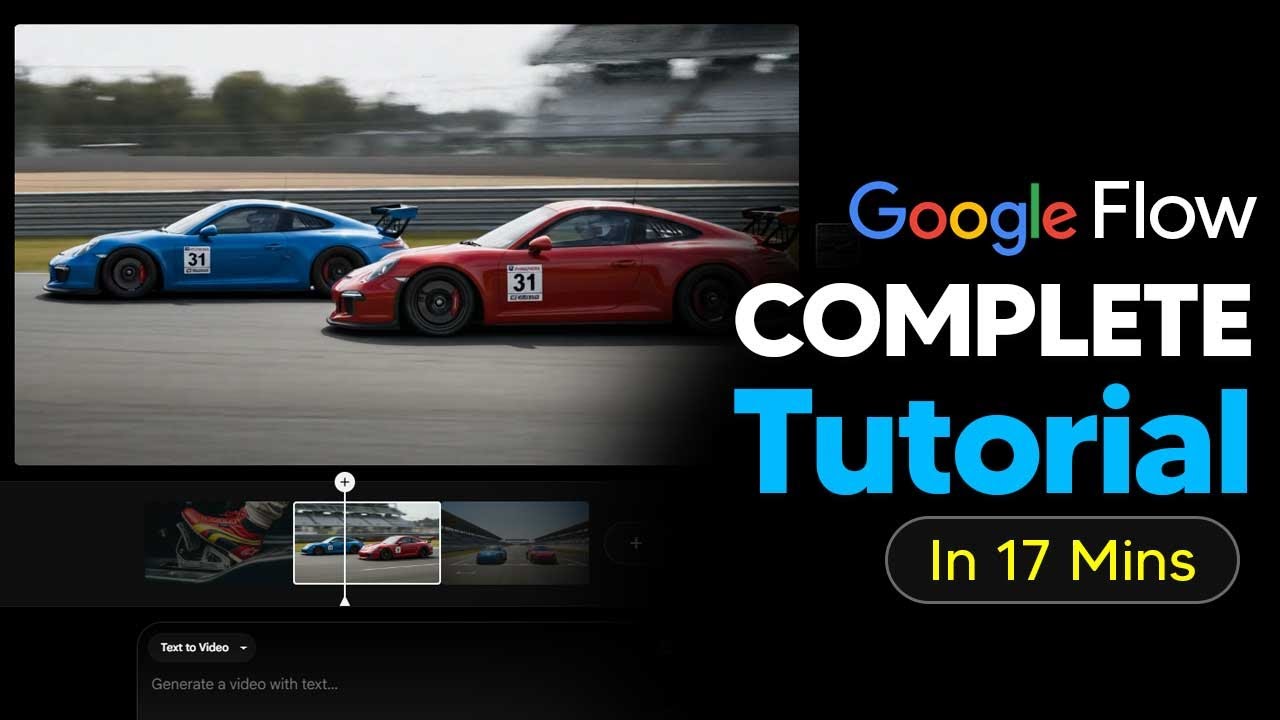The tutorial provides a comprehensive guide to using Google Flow for creating videos, covering project setup, image generation, scene editing, and model selection to achieve high-quality results. It emphasizes optimizing workflows, managing costs, and utilizing various features like scene transitions and assets to produce professional videos efficiently.
The tutorial begins by guiding users to create a new project within Google Flow, emphasizing the importance of organizing your work. It introduces the interface, highlighting the scene builder feature, which is useful for constructing more complex short films, and explains how to switch between different modes like text-to-video and frames-to-video. The platform allows users to generate images either by creating new ones or uploading existing images, with generating images first being recommended for beginners to establish a visual foundation for their videos.
Next, the video explains how to generate images using prompts, showcasing Google’s fast image generation feature that produces four images simultaneously for variety. It emphasizes the importance of refining prompts to get the desired results, and demonstrates how to reuse prompts to save time. The tutorial also covers editing images, selecting the best ones, and using them as a basis for video creation. Users can add images directly into the video pipeline, and the platform offers options to set end frames and adjust scene transitions, although some features like camera angles are limited to specific models.
The tutorial then dives into the different video generation models available—fast VO, V2, and V3—highlighting their costs and capabilities. It compares the quality and physics of videos produced by each model, noting that V3 offers the best realism and includes audio, making it ideal for high-quality clips. The presenter demonstrates how to select models, manage credits, and optimize costs by choosing appropriate models based on the project’s needs. The importance of understanding model limitations, such as hallucinations and scene consistency, is stressed to ensure better results.
Further, the video discusses scene editing and management, including how to trim clips, handle hallucinations, and add new scenes based on the last frame of a clip. It shows how to use camera angles and prompts to enhance scenes, though some features like camera angles only work with certain models. The presenter emphasizes the importance of aligning object movement with camera angles to avoid unnatural results. Additionally, the tutorial covers how to save specific frames as assets for future use and how to extend or delete clips within the scene builder, providing flexibility in editing and refining the final video.
Finally, the tutorial covers the process of assembling and exporting the final project. Users can add clips to the scene, arrange them, and make adjustments before exporting the entire film. It warns that navigating away from the project without saving will result in losing progress, so careful management is advised. The platform allows for downloading the completed video, with options to upscale resolution if needed. The presenter concludes by showcasing a finished video, encouraging creators to leverage Google Flow’s powerful tools for producing professional-quality videos efficiently.
